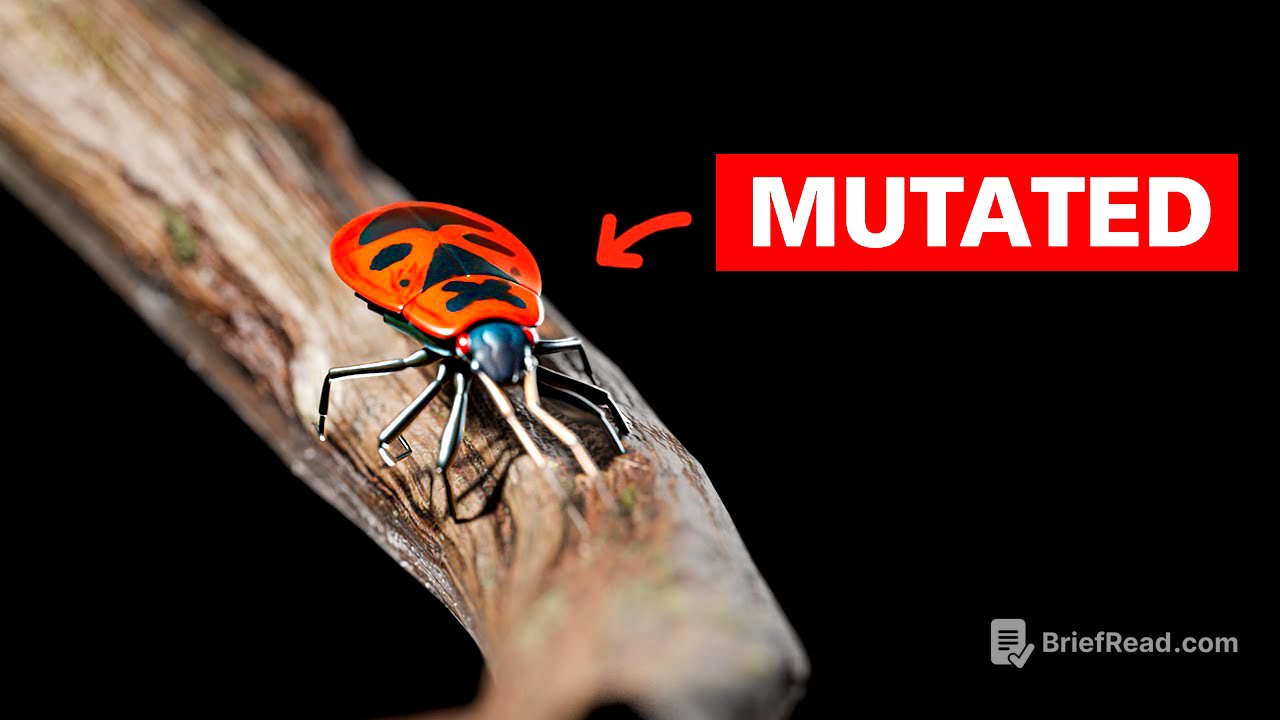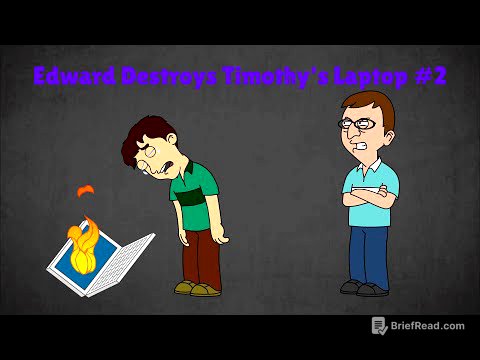TLDR;
This video explores the effects of the Chernobyl nuclear disaster on the wildlife and environment within the exclusion zone. It examines mutations and adaptations in plants, insects, fungi, and animals due to radiation exposure. The video also discusses ongoing scientific debates about the extent of adaptation versus mutation and the impact of the Russian invasion on Chernobyl research.
- The Chernobyl disaster led to significant environmental contamination and mutations in local flora and fauna.
- Some organisms, like fungi, may be utilizing radiation for energy, while others, like wolves, may be developing resistance to cancer.
- Scientific research in the area has been disrupted by the Russian invasion, hindering our understanding of the long-term effects of radiation.
Introduction to Chernobyl's Exclusion Zone [0:01]
The forest near Chernobyl exhibits unsettling characteristics, such as twisted pines, warped spiderwebs, and deformed insects and birds, indicating the presence of a highly radioactive exclusion zone. This area, the site of the largest nuclear disaster in history in 1986, remains largely uninhabitable for humans due to deadly radiation. Despite the dangers, nature has persisted, with plants and animals like wolves, deer, and insects adapting to the changed environment.
The Immediate Aftermath of the Disaster [1:21]
In the spring of 1986, Reactor 4 of the Chernobyl nuclear power plant exploded, releasing massive amounts of radioactive material. A deer exposed to the radiation quickly succumbed to its effects, experiencing internal burns, organ failure, and death. The surrounding pine forest turned red and died, earning the name "the Red Forest." Residents of nearby Pripyat were evacuated with the false assurance of a short return, leaving their pets behind. Authorities ordered the killing of stray dogs to prevent the spread of radioactive material, forcing them into the exclusion zone.
Wildlife in the Exclusion Zone [4:15]
Radiation levels remained dangerously high for months, causing chronic radiation sickness and death among animals. Over the next decade, radiation levels decreased, and the area became a vast, abandoned space where wildlife thrived, evolving into one of Europe's largest nature reserves. Bears, lynx, moose, foxes, and wolves settled in, along with descendants of abandoned pets. Despite the resurgence of wildlife, radiation silently persists, affecting the animals.
Visible Effects of Radiation: Mutations and Changes [5:28]
Exposure to radiation causes visible changes in the animals of Chernobyl, such as cataracts, a clouding of the eye lens. Pine forests in contaminated areas show twisted, stunted trunks and strange clusters of tangled leaves known as witches' brooms. Spiders spin warped and chaotic webs, while barn swallows exhibit white patches, crooked tail feathers, and tumors. Red firebugs display warped and asymmetrical patterns on their backs, with some missing eyes, all due to mutations in their DNA.
DNA Damage and Mutations [9:10]
Radioactive atoms damage living cells by breaking DNA or creating free radicals that disrupt the DNA structure. This can lead to mutations, diseases like cancer, or developmental problems. While many mutations have no effect or are repaired, some result in lasting changes that can be passed down to future generations.
Adaptation vs. Mutation: The Case of the Tree Frogs and Fungi [11:19]
Some organisms in Chernobyl show signs of adaptation. Tree frogs in the exclusion zone are sometimes pitch black due to melanin, which may protect against radiation. However, the link between melanism and radiation levels is debated. Black fungi growing inside Reactor 4 may be using gamma radiation as an energy source, converting it into energy for growth, similar to photosynthesis in plants.
Potential Adaptation in Wolves and Scientific Skepticism [13:49]
Biologist Cara Love and her colleagues suggest that wolves in the Chernobyl exclusion zone may be developing resistance to cancer due to natural selection favoring individuals with protective genes. However, this research is yet to be published and verified. Other scientists, like Timothy Mosau, remain skeptical about claims of rapid adaptation in Chernobyl, citing weak data in many studies.
Bacterial Adaptation and Research Disruption [15:44]
Timothy Mosau's research on bacteria colonies from Chernobyl showed that some colonies reproduced better under radiation compared to those from Denmark, suggesting adaptation. However, the Russian invasion of Ukraine in 2022 disrupted research in Chernobyl, with the destruction of equipment, loss of data, and postponement of studies, hindering our understanding of the long-term effects of radiation on the environment and wildlife.









